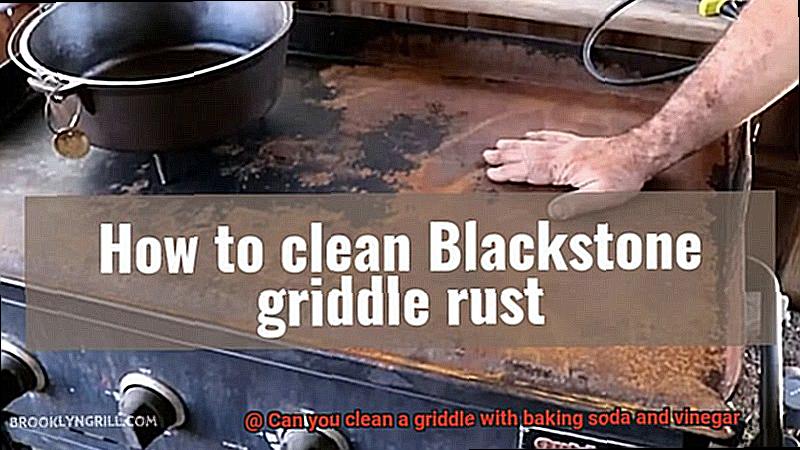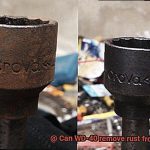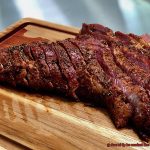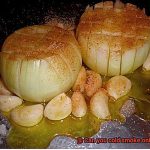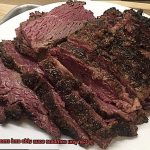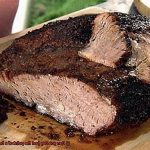Cleaning up after cooking can be a real drag, especially when it comes to cleaning a griddle. The grease and grime that accumulate after several rounds of cooking can seem like an insurmountable task to tackle. Not only is it unsightly, but it can also affect the quality of the food you cook and even pose health risks if left uncleaned.
Fortunately, there are cost-effective and environmentally friendly methods to clean your griddle. Two common household ingredients that come to mind for most people are baking soda and vinegar. These two have long been used in cleaning and disinfecting, but the question remains: Can they effectively clean a griddle?
In this article, we’ll explore everything you need to know about cleaning your griddle with baking soda and vinegar. We’ll outline the steps to follow, the materials you’ll need, and provide some tips to ensure that you get the best results. We’ll also take a look at alternatives to baking soda and vinegar and weigh in on which methods work best.
So whether you’re a seasoned chef or just starting out in the kitchen, read on to learn how you can keep your griddle squeaky clean with baking soda and vinegar – without breaking the bank.
Contents
What is a Griddle?
It’s a cooking device that can take your culinary skills to the next level. A griddle is a flat, rectangular-shaped surface made of metal, such as cast iron or aluminum, that can be used to cook a variety of foods, from pancakes to burgers. Griddles come in different sizes and shapes, some designed for home use while others are commercial-grade and used in restaurants.
Griddles can be heated using various sources of heat, including gas, electric, or even wood-fired. This versatility makes them an ideal tool for preparing large meals quickly. Additionally, most griddles have a non-stick surface that prevents food from sticking and allows for easy cooking. But over time, this surface can become worn out or damaged due to frequent use and exposure to heat.
Maintaining your griddle’s non-stick surface is essential to prolong its lifespan. Cleaning a griddle can seem like a daunting task, especially when it has been used to cook greasy food. However, there are several methods you can use to clean your griddle effectively and safely.
One popular method is using baking soda and vinegar. These two household items are known for their cleaning properties and can work wonders on your griddle’s surface. To clean your griddle with baking soda and vinegar, start by removing any excess debris or food particles from the surface using a scraper or spatula.
Next, sprinkle a generous amount of baking soda on the surface of the griddle, ensuring that it covers the entire surface evenly. Then spray some white vinegar on top of the baking soda. As these two ingredients combine, they produce carbon dioxide bubbles that help loosen any remaining debris or grease on the surface.
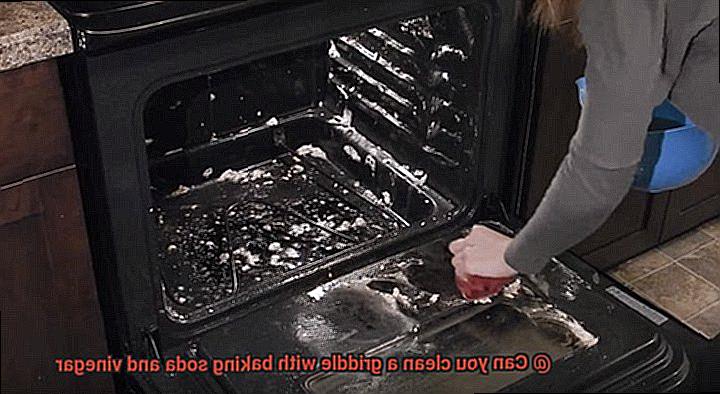
Allow the solution to sit for about 5-10 minutes before wiping away the baking soda and vinegar solution from the griddle’s surface using a damp cloth or sponge. Repeat this process until all debris and grease have been removed from the surface.
Benefits of Cleaning a Griddle with Baking Soda and Vinegar
Cleaning a griddle can be a daunting task, especially when it’s caked with stubborn grease and grime. But fear not, because your kitchen pantry holds the key to an easy, effective, and eco-friendly griddle cleaning solution. Baking soda and vinegar are the household heroes that can make your griddle shine like new.
Baking soda is a powerful abrasive agent that can tackle even the toughest stains and grease on your griddle. When mixed with water, it forms a paste that can be easily spread over the griddle surface to loosen dirt and grime. Not only that, but baking soda also has mild alkaline properties that help neutralize acidic substances, making it the perfect cleaner for acidic food residues such as tomato sauce.
But the magic doesn’t stop there. Vinegar is another natural cleaning agent that contains acetic acid, which dissolves grease and grime while breaking down mineral deposits on the griddle surface. When combined with baking soda, vinegar creates a bubbling reaction that helps lift dirt and debris from the griddle surface.
One of the many benefits of using baking soda and vinegar for griddle cleaning is their non-toxic and eco-friendly nature. Unlike harsh chemical cleaners, these natural ingredients are safe to use around food and won’t harm the environment. Plus, they’re affordable and readily available in most households.
How to Clean a Griddle with Baking Soda and Vinegar
Cleaning a griddle with baking soda and vinegar is a popular method that has been used for many years by many people. It is an effective, safe, and inexpensive way to remove stubborn stains, grease, and food residue from your griddle. In this post, we’ll guide you through the steps of cleaning your griddle with baking soda and vinegar so that you can keep your griddle in top condition.
Gather Your Supplies
Before you start cleaning your griddle, make sure you have all the necessary supplies. You’ll need baking soda, white vinegar, water, a spray bottle, a scrub brush or sponge, and a clean cloth or paper towel. Having all these items will ensure that you can clean your griddle effectively.
Create a Paste
The first step is to create a paste using baking soda and water. Mix one tablespoon of baking soda with enough water to form a thick paste. Spread this paste over the surface of your griddle and let it sit for about 10-15 minutes. This will allow the baking soda to penetrate the grime and loosen it up.
Spray with Vinegar
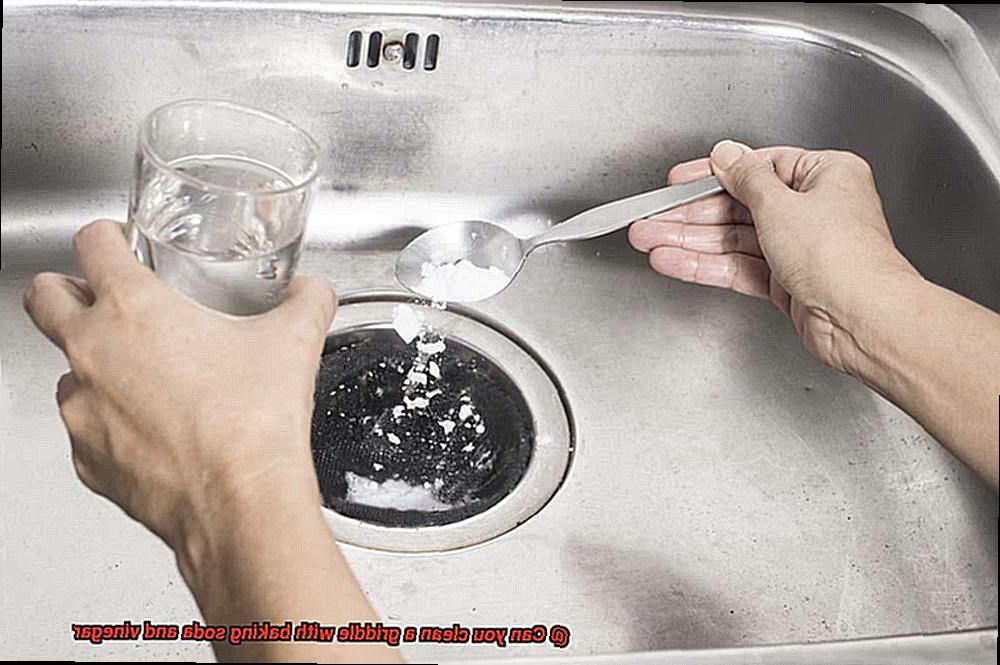
Next, fill a spray bottle with equal parts water and white vinegar. Spray this mixture over the baking soda paste on your griddle. You will notice that the mixture will start to fizz as the vinegar reacts with the baking soda. This reaction creates carbon dioxide gas which helps to lift up the grime and dirt from the surface of your griddle.
Scrub Gently
Using a scrub brush or sponge, gently scrub the surface of your griddle in circular motions. Be careful not to scratch the surface of your griddle while scrubbing. Applying enough pressure will help remove all dirt and stains from your griddle. If you encounter any stubborn stains or grease spots, you can apply more baking soda paste to these areas and let it sit for an additional 10-15 minutes before scrubbing again.
Rinse and Dry
Once you have thoroughly cleaned your griddle with baking soda and vinegar, rinse it off with clean water to remove any remaining baking soda or vinegar residue. Then dry it off with a clean cloth or paper towel. You will be amazed at how clean and shiny your griddle looks after using this simple yet effective cleaning method.
Tips for the Best Results when Cleaning a Griddle with Baking Soda and Vinegar
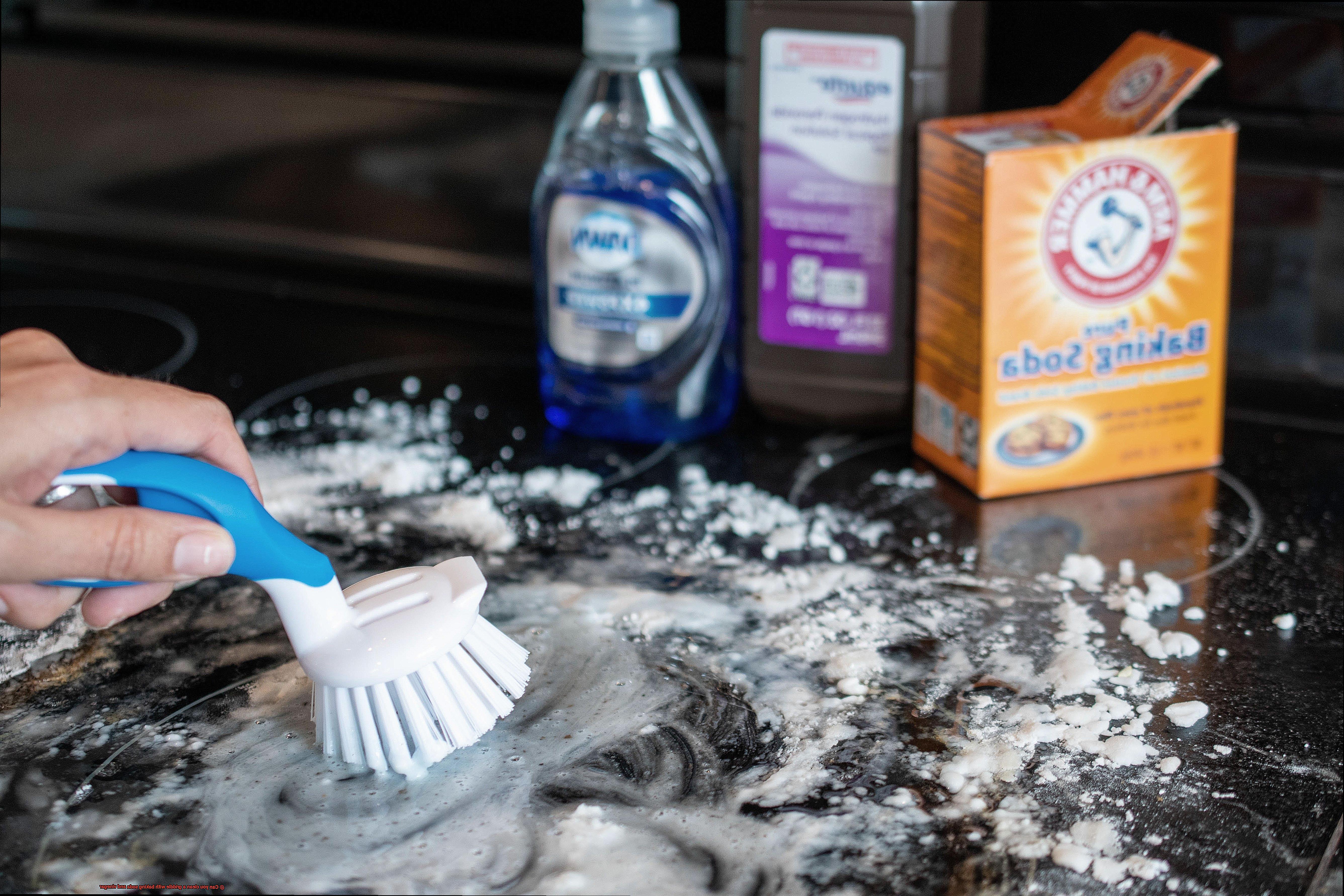
Cleaning a griddle can be a daunting task, especially when you’re dealing with stubborn grease and grime. Luckily, using baking soda and vinegar can be an effective and eco-friendly solution. Here are some tips and tricks to achieve the best results when cleaning your griddle:
Start with a Cool Griddle
Safety is key when it comes to cleaning your griddle. Make sure that it has completely cooled down before you start cleaning to avoid any burns or injuries.
Use Baking Soda
Sprinkle a generous amount of baking soda over the entire surface of the griddle. A soft-bristled brush or sponge will allow you to spread it evenly across the surface, ensuring that all areas are covered.
Add Vinegar
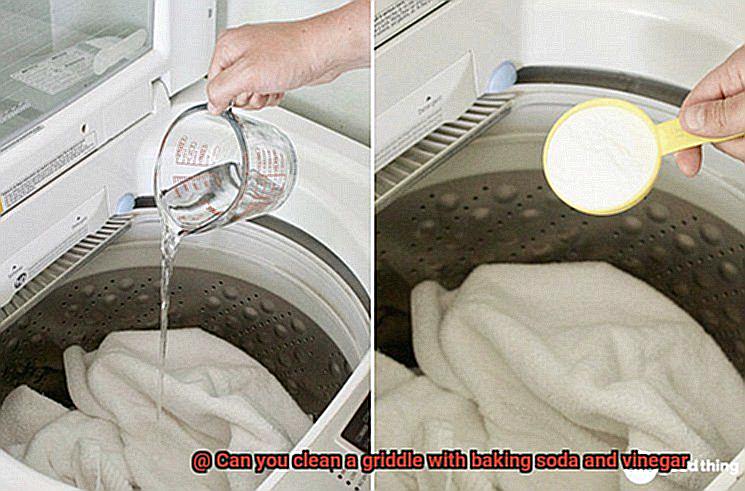
Pour white vinegar over the baking soda until it starts to foam. This chemical reaction helps to loosen any stuck-on food or grease on your griddle.
Scrub Gently
Use a non-abrasive scouring pad or brush to scrub the griddle gently. Avoid using steel wool or other abrasive materials that could scratch the surface. Pay extra attention to any areas that are particularly dirty or greasy.
Rinse Thoroughly
Once you’ve finished scrubbing, rinse the griddle thoroughly with hot water. Make sure that all of the baking soda and vinegar has been removed.
Dry Completely
Use a clean towel or paper towels to dry the griddle completely. This will prevent any rust or corrosion from forming.
Other Ways to Clean a Griddle
When it comes to keeping your griddle clean, there are plenty of alternatives to baking soda and vinegar. Here are five effective ways to keep your griddle in tip-top shape without relying on these popular cleaning agents.
Griddle Stone or Scraper
If you want to avoid using chemicals, a griddle stone or scraper is an excellent option. These tools are designed to gently scrape away any excess food or residue from the surface of the griddle. Simply apply some water to the griddle stone or scraper and gently rub it over the surface of the griddle until all debris is removed. The best part? They’re reusable and can be used again and again.
Commercial-Grade Cleaner
If you’re dealing with tough grease and grime, commercial-grade cleaners can be an effective way to clean your griddle. These cleaners are specifically formulated to break down tough grease and grime on griddles and other cooking surfaces. Simply apply the cleaner to the surface of the griddle, let it sit for several minutes, and then wipe it away with a soft cloth or paper towel. Just make sure to read the label for any precautions before using.
Lemon Juice and Salt
For those who prefer a more natural approach, lemon juice and salt can be an effective way to clean your griddle. Sprinkle some salt over the surface of the griddle and then squeeze fresh lemon juice over it. Allow the mixture to sit for several minutes before scrubbing the surface of the griddle with a soft cloth or sponge. The acidity in the lemon juice will help break down grease and stains, making it easier to wipe away.
Onion
Yes, you read that right. Using an onion is an effective way to clean your griddle. Cut an onion in half and rub it over the warm surface of the griddle. The onion juice will help break down any grease or stains, making it easier to wipe away. Plus, it’ll leave a nice, subtle onion flavor on your griddle for your next cookout.
Steam Cleaning
Steam cleaning is an effective way to clean a griddle without the use of harsh chemicals. Simply fill a spray bottle with water and spray it onto the surface of the griddle. Then, using a scraper or spatula, gently remove any excess food or debris from the surface. Repeat this process until all debris has been removed from the surface of the griddle. Not only is steam cleaning eco-friendly, but it’s also gentle on your griddle’s surface.
Pros and Cons of Using Baking Soda and Vinegar to Clean Your Griddle
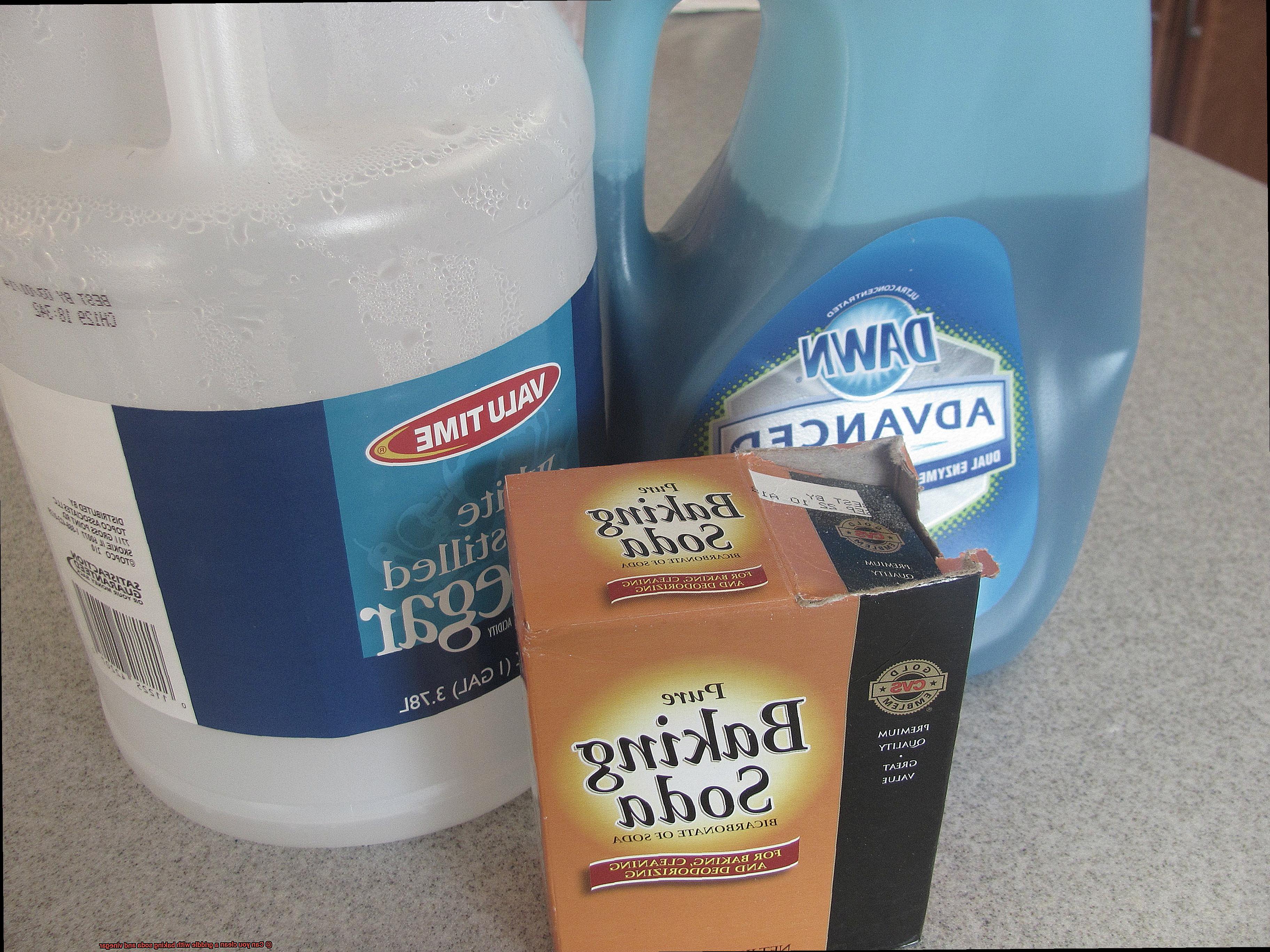
One popular cleaning method that many people swear by is using baking soda and vinegar. However, like any cleaning method, it comes with its own set of pros and cons.
One of the most significant advantages of using baking soda and vinegar is that it’s an eco-friendly and non-toxic method. Unlike harsh chemicals, there are no harmful fumes or residue left behind that could potentially harm you or your food. Additionally, both baking soda and vinegar are inexpensive and readily available at most grocery stores, making this method a cost-effective solution.
Another pro is that baking soda and vinegar are effective in removing stubborn grease and grime from your griddle. The combination of the two creates a chemical reaction that breaks down and dissolves grease, making it easier to wipe away. This method is gentle enough to be used on most types of griddles without damaging them.
However, there are also some cons to using baking soda and vinegar. For instance, it may not be as effective on heavily soiled griddles. While it can remove light to moderate grease and grime, it may not be strong enough to tackle tough stains or burnt-on residue. In these cases, you may need to use a stronger cleaning solution or scrubbing tool.
Another potential con is that the combination of baking soda and vinegar can create a foaming reaction that may make a mess. While this isn’t necessarily harmful, it can be messy and require extra clean-up time.
To summarize, here are the pros and cons of using baking soda and vinegar to clean your griddle:
Pros:
- Eco-friendly and non-toxic
- Inexpensive and readily available
- Effective in removing light to moderate grease and grime
- Gentle enough for most types of griddles
Cons:
- May not be effective on heavily soiled griddles
- Can create a foaming reaction that may make a mess
Safety Considerations When Cleaning a Griddle with Baking Soda and Vinegar
If you’re considering using baking soda and vinegar to clean your griddle, it’s important to prioritize safety above all else. While these natural cleaning agents are generally safe, they can still cause harm if not used correctly. Here are some essential safety considerations to keep in mind:
Protective Gear:
Before you even begin mixing your cleaning solution, make sure you’re wearing the proper protective gear. Gloves and eye protection are a must to prevent any contact with the solution. Both baking soda and vinegar can cause skin irritation and eye damage if they come into contact with your skin or eyes.
Cool Down:
Ensure that your griddle is completely cooled down before starting the cleaning process. Hot surfaces can cause the cleaning solution to react differently, which can lead to fumes or even explosions. Avoid any risk by letting your griddle cool down completely.
Ventilation:
When mixing baking soda and vinegar, make sure you do so in a well-ventilated area. The mixture produces carbon dioxide gas, which is harmless in small amounts but can be harmful if inhaled in large amounts. Keep a window open or use an exhaust fan to ensure proper ventilation.
Proper Measurements:
Lastly, make sure you’re using the right amount of baking soda and vinegar for the size of your griddle. Too much of either ingredient can cause an overflow or spillage, which can create a mess or even harm you. Measure the ingredients beforehand and use them accordingly.
5DPUWAFpTJU” >
Conclusion
Cleaning a griddle can be a daunting task, especially when it has been used to cook greasy food. But fear not. There are several methods you can use to clean your griddle effectively and safely. One popular method is using baking soda and vinegar – two household items that are known for their cleaning properties and can work wonders on your griddle’s surface.
Baking soda is a powerful abrasive agent that can tackle even the toughest stains and grease on your griddle. When mixed with water, it forms a paste that can be easily spread over the griddle surface to loosen dirt and grime. Vinegar is another natural cleaning agent that contains acetic acid, which dissolves grease and grime while breaking down mineral deposits on the griddle surface. And when combined with baking soda, vinegar creates a bubbling reaction that helps lift dirt and debris from the griddle surface.
Using baking soda and vinegar to clean your griddle has many benefits, including being non-toxic and eco-friendly. Plus, both ingredients are readily available in most households, making this method cost-effective as well. However, keep in mind that it may not be effective on heavily soiled griddles or tough stains.
When cleaning your griddle with baking soda and vinegar, safety should always be prioritized by wearing protective gear such as gloves and eye protection, ensuring proper ventilation, cooling down the griddle before starting the cleaning process, and using proper measurements of ingredients.
Overall, using baking soda and vinegar to clean your griddle is an effective method that can keep your cooking device in top condition without breaking the bank or harming the environment.

